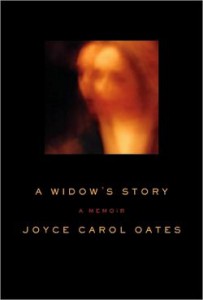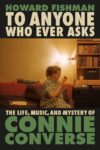by Emma Schneider
Joyce Carol Oates’s memoir, A Widow’s Story, labors through the wild unraveling of her life in the first tosses and turns of widowhood, and then through the excruciatingly gradual re-winding of her self. Throughout, Oates recounts how suicide beckons from the now-empty seat at her table and the lure of her pill cache.
Time is lost in Oates’s journal-like memoir as one memory climbs over the next in a jumbled heap of compounded denial, guilt, love, and realization. Oates clutches at her world, trying to piece its unpredictability, its multi-directionality into a linear narrative. “No first… No first… No first…” she repeats in the initial turmoil of her husband’s death—her first moments of a posthumous existence. One emotion interrupts another in a series of convoluted, dash-ridden sentences that create a tangle of Dickensonian brambles, occasionally dotted with the softly familiar sight of a numbered poem amidst Oates’s prose. Unlike a reader of Dickenson, however, Oates’ reader must push her way up a mountain of words, slippery with confused thoughts and sharp with grief.
Jarringly, a third person voice inserts itself into the narrative, often at the end of a chapter. It summarizes and generalizes, turning individual experience into the cool authority of “The Widow’s Handbook” (as Oates names the voice on the memoir’s final page). Oates removes herself of personhood: she is, simply, the widow. Perhaps by seeing herself from this nameless distance, she removes herself from her lonely reality. Such an voice, however, is almost presumptuous. She has only been a widow once, after all. She may be a widow, but not the widow. Thankfully, her universal experience is only occasionally claimed. Her title, notably, begins with “A.”
A Widow’s Story drains its reader of sympathy—sending her flying to the embrace of love and companionship, grasping to find a tighter grip on what Oates has lost. Loneliness and depression flood over page after page. While Oates dreams of pills, she writes in an endless stream of forlorn and tortured words. But, at last, the clouds break. Oates replants her husband’s garden. As she regains her ability to see herself in the world, her prose clarifies. The dashed and broken lines of her early chapters heal into complete memories. The rest of the memoir reads easily, calmly, even contentedly. Oates’s grim basilisk of suicide withers in the spring sunlight.
Oates writes her memoir “to see what can be made of the phenomenon of ‘grief’” only to discover that she is “no longer convinced that there is any inherent value in [it].” Even if there is wisdom to be gained, she determines,“it’s a wisdom one might do without.” Why, then, has she dragged her reader through 406 pages of grieving to reach such a pronouncement?
Just as grief does, A Widow’s Story goes on rather longer than one would wish. At times it is exquisitely formed, at times grotesquely overwrought. It begins with the denouement and wanders through memories and rooms gathering up the threads, bundling them, and weaving them back into a semblance of life. It is rarely pleasant, except at its finish, and yet, its elegant prose bears a weight too often ignored—the heavy hours of grieving alone. By forming these hours into a memoir, Oates has given these solitary times companionship.
This post may contain affiliate links.









